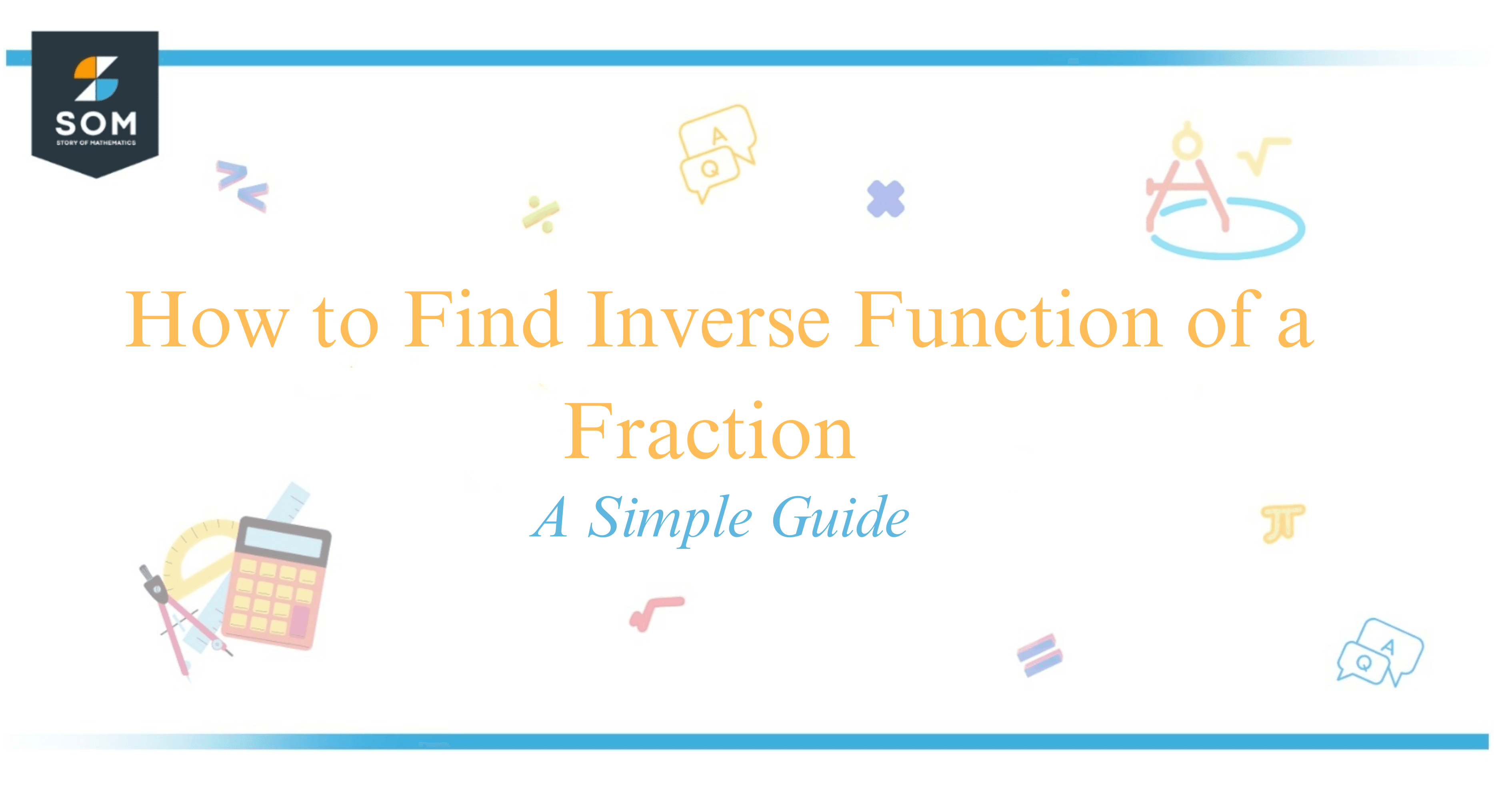JUMP TO TOPIC

To find the inverse function of a fraction, I must swap the roles of the independent variable (usually labeled as ( x )) and the dependent variable (usually labeled as ( y )) in the original function.
For a function to have an inverse, it needs to be a one-to-one function, which means that for each output of the function, there is a unique input. If the function meets this criterion, I can then express the original function as $y = \text{some fraction involving } x$, and solve for ( x ) in terms of ( y ) to define the inverse function.
After expressing the original function with ( y ) isolated, I would essentially reverse the function by interchanging ( x ) and ( y ). This requires me to perform algebraic manipulations to solve for the new ( y ), which gives me the inverse.
The final expression, now starting with ( y = ), represents the inverse function. Understanding this process allows us to navigate through math and algebra with a clearer view of how functions describe real-world relationships between different quantities.
Finding the inverse of a function can unveil symmetries and provide insights into a problem, especially when dealing with ratios or rates that are described by fractional functions.
It’s like having a conversation where you understand both the question and the answer—each one helps to decipher the meaning of the other. Let’s embark on this journey to decode the language of functions together.
Finding Inverses of Rational Functions
Rational functions pose a unique challenge when finding their inverse functions, due to their fractions involving variables in both the nominator and denominator.
I’ll guide you through the process to methodically invert these functions, ensuring the domain and range are correctly established.
Steps to Find the Inverse of a Fraction
To find the inverse of a function, you first need to replace the function notation ( f(x) ) with ( y ). Then, interchange the roles of ( x ) and ( y ) in the equation. This means ( x ) becomes ( y ) and vice versa.
The next step is to solve for ( y ), which is now the inverse function. Finally, it’s essential to examine the original domain and range, as the domain of the original function becomes the range of the inverse, and the range of the original becomes the domain of the inverse.
| Step | Description |
|---|---|
| 1 | Replace ( f(x) ) with ( y ) in the rational function. |
| 2 | Swap ( x ) and ( y ) in the equation. |
| 3 | Solve for ( y ) to find the inverse function. |
| 4 | Re-define the domain and range based on the original function. |
Working with Complex Fractions
A complex fraction is one in which the nominator or the denominator itself has a fraction. When finding the inverse, pay attention to these internal fractions.
You may need to multiply by a reciprocal or use common denominators to combine terms before you can invert. This simplification step is crucial for isolating ( y ) and solving for the inverse function.
Analyzing the Inverse for Verification
Once the inverse is found, I like to verify it by checking two main properties: whether the inverse function is indeed a function and if the composition of the original function and its inverse yields the identity function.
For instance, $f(f^{-1}(x)) = x $ and $ f^{-1}(f(x)) = x $. This tells me that the domain and range of both functions align appropriately and that the inverse function is correctly found. If the original function is a linear or cubic function, this verification step is especially straightforward.
With rational functions, I must consider possible values of ( x ) that might result in division by zero. The graph can also be a helpful visual tool for ensuring the rational function and its inverse are reflective across the line ( y = x ), indicative of one-to-one correspondence required for inverting a function.
Conclusion
In this journey to understand how to find the inverse of a function with fractions, I’ve covered the step-by-step process that enables us to unravel the inverse.
It’s been about swapping the variables and solving for the new dependent variable, combined with attention to the original function‘s domain and range.
Starting with a function represented by the equation $y = \frac{a}{bx+c}$, I replaced $y$ with $x$ and then solved for the new $y$ to find the inverse function $f^{-1}(x)$.
The diligence in handling the algebraic manipulations and the keen eye on where the function is defined, is what solidifies the understanding of the inverse.
If you follow these guidelines and have a grasp of basic algebra, finding the inverse of a fractional function is an achievable task. Remember, the graphical representations of a function and its inverse are reflections of each other across the line $y = x$, which is a helpful check for accuracy.
I encourage you to revisit the steps provided and practice with different examples to strengthen your comprehension. Should you need more in-depth exploration, take a look at the resources for finding inverse functions to further elucidate the topic.
Embrace these mathematical adventures, as they’re not just exercises in futility, but stepping stones to mastering concepts that elucidate a wider mathematical world.
The elegance of functions, be they fractional or otherwise, is truly a testament to the beauty of mathematics.
